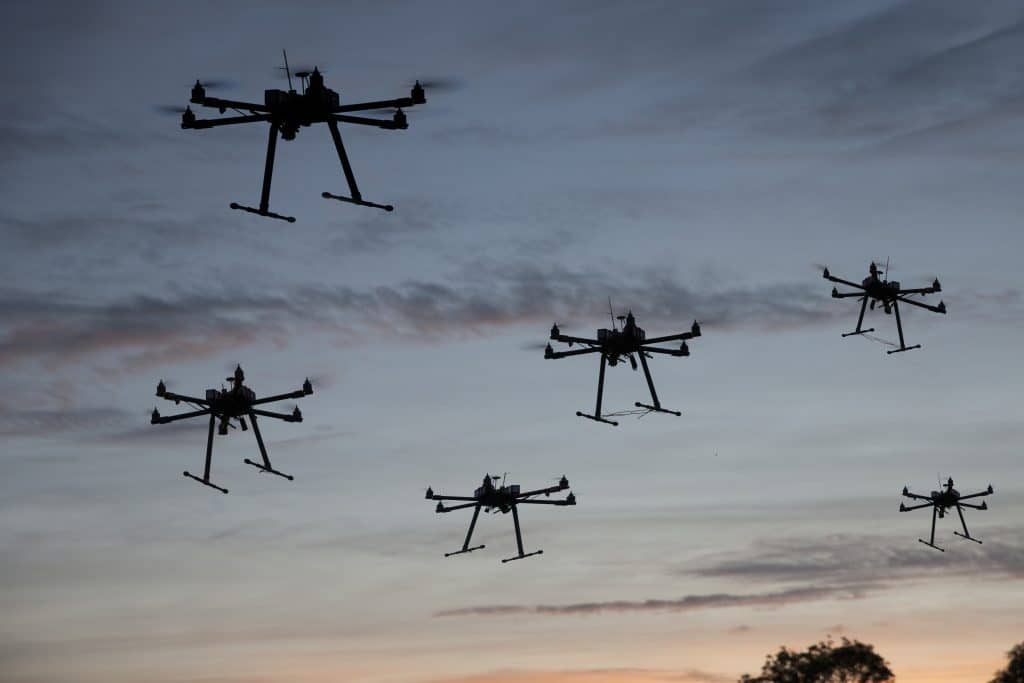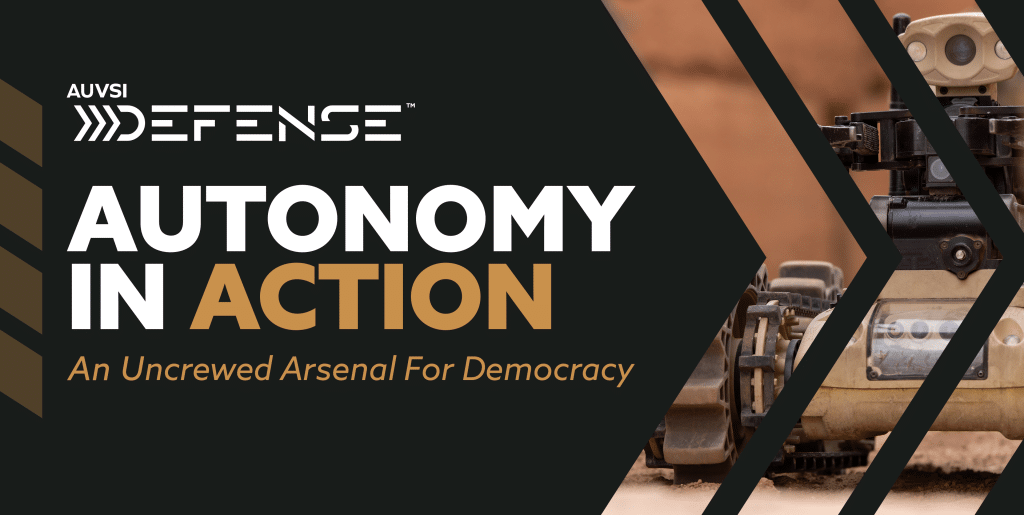Progress on Domestic UAS Detection & Mitigation is Required for Public Trust, Enabling Drone Regulations
March 11, 2025

Uncrewed aircraft systems (UAS, or drones) have transformed industries, increased efficiency, and saved lives. The overwhelming majority of drone operations comply with regulations, with registered aircraft and a Remote ID sensor serving as a digital license plate. This is especially true for AUVSI members and the customers our members serve. However, as drones become more prevalent, so do the risks associated with their misuse – whether careless, clueless, criminal, or truly evil.
On Sunday, CBS’s “60 Minutes” will air a segment on unauthorized drone incursions at U.S. military installations—a serious problem that the U.S. government appears unable to address. In December, AUVSI, like many in the UAS industry, was busy fielding calls from local, state, and federal lawmakers, regulators, media, and the public asking about “drones” in the skies over New Jersey. Our position on this was clear – the sightings, real and misidentified, highlight the urgent need for the U.S. to modernize its approach to airspace monitoring and regulation to provide a better airspace awareness picture.
A few key points –
Remote ID (RID) is not working as intended. Compliance remains low – below 50%. Further, RID would obviously not be used by anyone operating a drone for criminal activities. There must be additional options for law enforcement at the federal level, as well as state, local, tribal, territorial (SLTT) levels, to identify and track non-compliant drones.
The U.S. has not invested in low altitude airspace awareness to give officials the ability to track drones, or anything else, in low altitude airspace. As I noted on C-SPAN’s Washington Journal as a guest during the December “drone” excitement, we are putting billion-dollar duct tape on our Air Traffic Control (ATC) network, supporting infrastructure that was intended to be retired years or even decades ago. With more than 90% of the ATC facilities and maintenance budget going towards maintaining legacy systems operating well beyond their lifespan, little money is left over for investment in modern airspace awareness tools. This investment calculus must change.
Despite years of expert recommendations and repeated warnings from national security professionals, including AUVSI & ACI-NA back in 2019 with the Blue Ribbon Task Force on UAS Mitigation at Airports, Congress has not updated our nation’s UAS detection and mitigation authorities since 2018. Meanwhile, the airspace has evolved tremendously, and the number of drones operating in the U.S. has expanded exponentially.
The lack of federal action and investment has left a dangerous gap in our ability to respond to reckless or nefarious drone activity. Today, only four federal agencies – DoD, DHS, DOE, and DOJ – are authorized to detect and mitigate UAS threats, and their authorities are very limited. State and local law enforcement, airport and prison operators, and other critical infrastructure entities are left watching and waiting while unauthorized drones fly overhead. If something catastrophic happens—a collision with a passenger aircraft, an attack on a packed stadium, or an intrusion into a sensitive government facility – finger-pointing will be inevitable. Congress, the White House, the FAA, DHS, industry, and local authorities will all scramble to assign blame, caught in a real-life version of the Spider-Man meme. But pointing fingers won’t prevent a crisis – taking action will.
We urge the immediate steps:
Expand UAS Detection & Mitigation Authority: Congress should pass the bipartisan Disabling Enemy Flight Entry and Neutralizing Suspect Equipment (DEFENSE) which aims to protect outdoor sporting events from unauthorized drones and enhances security at major outdoor gatherings and sporting events by ensuring that state and local law enforcement have the authority and tools necessary to protect these events from aerial threats in real-time, rather than waiting for federal intervention. The bill would give state and local law enforcement the authority to mitigate threats posed by drones and unmanned aircraft systems in places where a temporary flight restriction is in place. This includes large outdoor and sporting events. It would also require DOJ, FAA, FCC, and NTIA to create a list of approved technology that local and state law enforcement officers can use to address these threats.
Congress should also reintroduce and pass legislation akin to the bipartisan Preventing Emerging Threats Act of 2023, which would grant vital authorities to address drone threats at critical sites and large public events. Presently, FAA and other federal agencies, including the Department of State and the CIA, lack relief from Title 18 to even engage in information sharing from certain UAS detection technologies – this needs to be addressed. Further, SLTT law enforcement, airport and prison operators, and other critical infrastructure owners should have clearly defined roles and legal protections to deploy UAS detection and identification technology under appropriate federal oversight. Additional federal authorities along with authorized and trained SLTT law enforcement authorities should also receive authorities for UAS mitigation to assist federal authorities, which simply cannot cover the demand for their services.
Modernize FAA Regulations: The Trump Administration should instruct the DOT & FAA accelerate the rulemaking process to integrate BVLOS rules alongside counter-UAS solutions within controlled airspace, ensuring that legitimate drone operations can coexist with security measures. Drones remain “scary” to some people today because they are not yet familiar with drone operations. With the BVLOS framework in place, compliant and beneficial drone operations will become much more routine, building public trust and reducing the discomfort that exists now for some.
Provide Clear Guidance and Funding: Federal agencies, including the FAA, DHS, and DOJ, must develop a comprehensive framework for counter-UAS deployment, including airspace management, training, and resources for local agencies. Specifically, the FAA UAS Detection & Mitigation Rulemaking Committee report should be adopted and implemented by the FAA. Further, airspace modernization must be taken seriously – equipment beyond its lifespan needs to be retired and new, modern airspace awareness tools need to be brought online. This requires leadership and hard decisions, but we are confident that the leadership of the DOT and FAA are up for the task. The 2209 rule – designating critical security sites around the U.S. as restricted from drone operations – needs to be made final and enforced by the Trump Administration.
The cUAS industry has been waiting for legislative progress for six years to enable their critical security technology. The UAS industry stands ready to be part of the solution. We encourage the Trump Administration to act within the bounds of Executive authority. Further, we need Congress to act with urgency before an avoidable crisis forces their hand. We know the risks. We have the solutions. Now, we need the leadership to get this done.
Media Contact:
Casie Ocaña
Vice President, Public Affairs
cocana@auvsi.org
AUVSI


